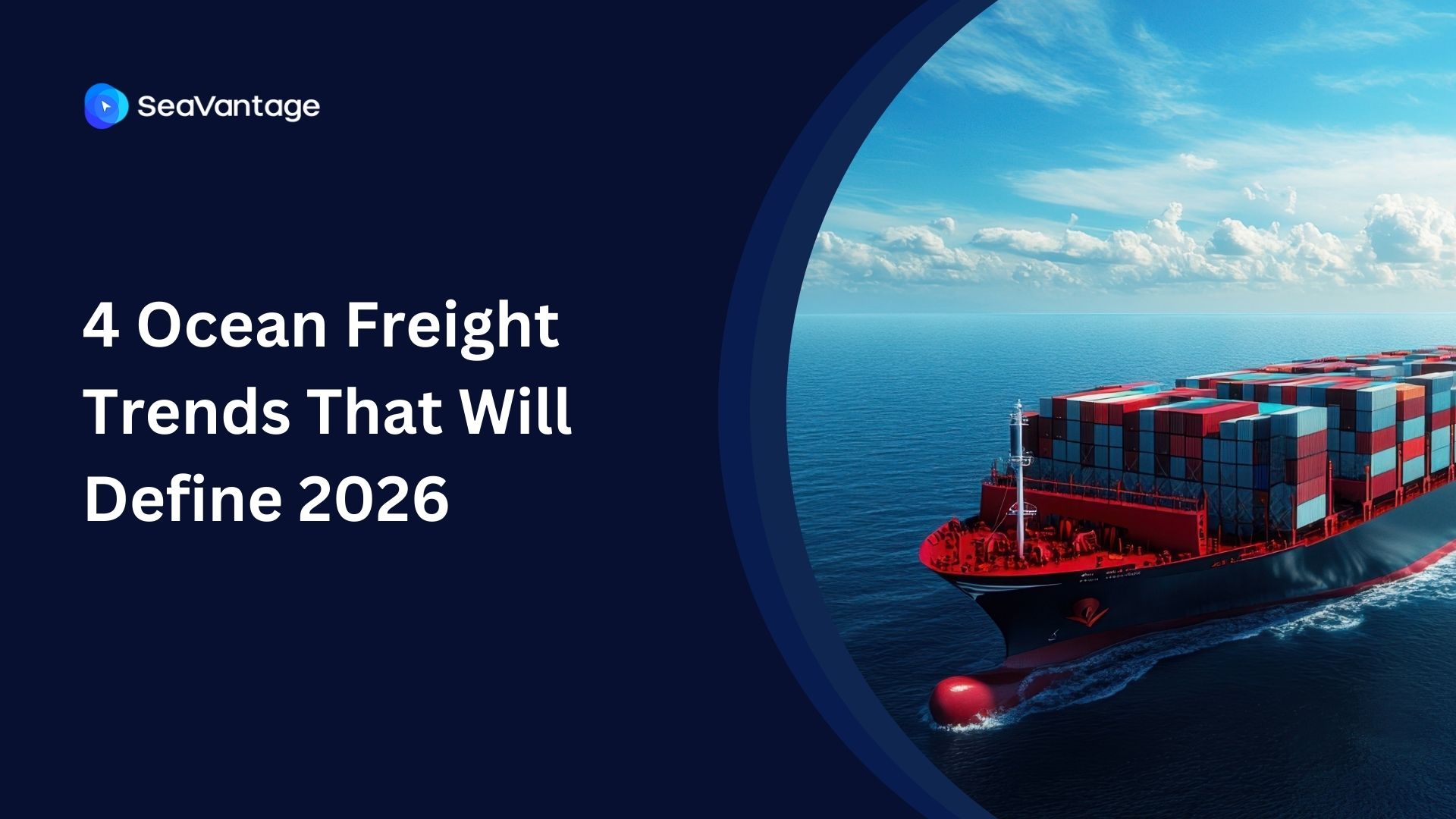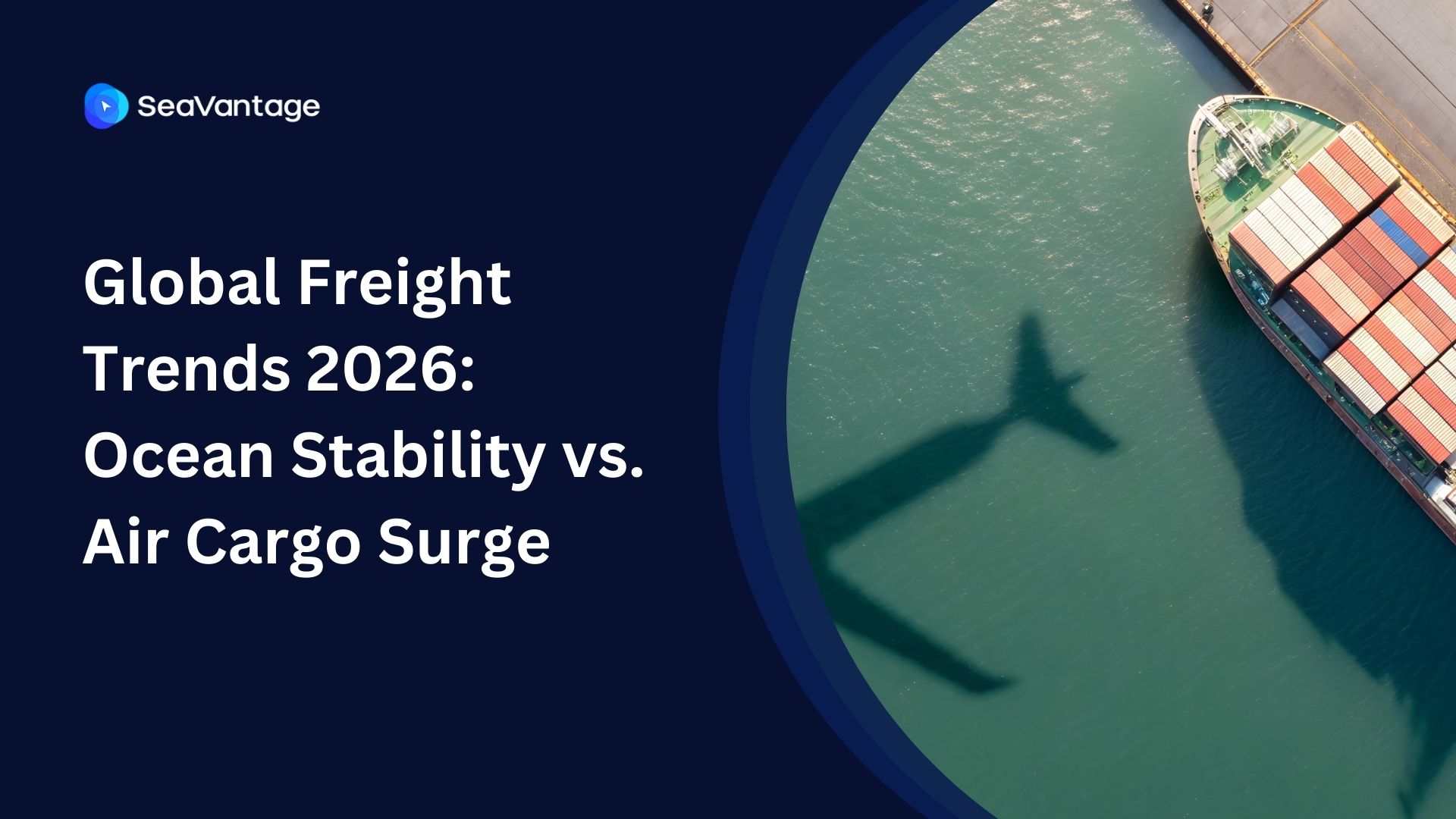Container Tracking Milestones: Enhancing Visibility in Global Shipping

Container Tracking Milestones: Enhancing Visibility in Global Shipping
Global shipping moves billions of containers every year. Tracking them isn't optional—it's essential. Visibility into these movements ensures efficiency, saves costs, and improves customer satisfaction.
Container tracking milestones play a key role in this process. Each milestone tells you where your container is and what's happening to it. The better you track them, the more control you have over your supply chain.
Let’s break down container tracking milestones, their importance, and how to leverage them effectively.
What Are Container Tracking Milestones?
Container tracking milestones mark significant events in a container’s journey.
These events start when an empty container is picked up and end when the goods reach their destination.
Key milestones include:
- Empty Container Pick-Up
The container is picked up from the depot, ready to be loaded with goods. - Loading at the Shipper’s Location
The container is loaded with cargo at the shipper’s facility. - Gate-In at the Port Terminal
The loaded container enters the port terminal, awaiting vessel loading. - Vessel Departure (Loaded on Board)
The container is loaded onto the vessel, and the ship begins its journey. - On the Way (In Transit)
The container is transported across the ocean to its destination. - Transshipment (if applicable)
The container is transferred to another vessel at an intermediate port. - Vessel Arrival at Destination Port
The vessel carrying the container arrives at the destination port. - Container Discharge
The container is unloaded from the vessel at the port terminal. - Customs Clearance
The container undergoes inspection and clearance by customs authorities. - Gate-Out from the Port
The container leaves the port terminal, moving toward its final delivery. - Final Delivery to the Consignee
The container is delivered to the consignee’s location, completing the journey.
Each milestone provides a snapshot of progress. When delays happen, these updates help identify where things went wrong.
For instance, if customs clearance is taking longer than expected, you can coordinate with your freight forwarder to resolve issues faster.
Why Tracking Milestones Matters
Visibility isn’t just about knowing where your container is. It’s about making informed decisions.
Here’s why milestone tracking is critical:
- Proactive Problem-Solving
If you know a container is stuck in transshipment, you can act before it impacts your supply chain. - Efficiency Gains
Detailed tracking allows you to fine-tune operations. Identify bottlenecks and reduce idle time. - Customer Satisfaction
Your customers want updates. Milestone tracking lets you keep them informed. This builds trust and loyalty. - Risk Management
Spot potential issues early, whether it’s weather disruptions or carrier delays.
Real-time data enhances this further. Learn more about real-time data's role in supply chains here.
Common Challenges in Container Tracking
Despite its importance, container tracking comes with challenges.
1. Inconsistent Data
Not all carriers update milestones promptly. Missing updates create blind spots.
2. Transshipment Complexity
Containers often switch vessels at transshipment ports. Tracking can break down here, especially when multiple carriers are involved.
3. Multiple Platforms
Shippers often rely on different carrier systems to track containers. The lack of integration makes tracking tedious.
Example:
A freight forwarder managing shipments across three carriers might need to log into three separate portals to check statuses. This wastes time and increases the risk of errors.
Overcoming Tracking Challenges
Modern tools can help.
Here’s how:
- Unified Tracking Platforms
Platforms like SeaVantage centralize tracking. Instead of juggling multiple systems, you get updates in one place.
Example: With SeaVantage, you can track loading, customs clearance, and vessel arrivals from a single dashboard. - Real-Time Alerts
Notifications keep you updated on milestone changes. This is especially useful during transshipments or when delays occur. - Collaborative Tools
Tools that let you share milestone updates with stakeholders improve transparency. Everyone stays on the same page.
Explore more solutions for modern tracking here.
Key Milestones to Prioritize
Not all milestones are equal. Focus on these critical ones for maximum visibility:
- Gate-In and Gate-Out at Ports
Knowing when containers enter and leave terminals prevents idle time. - Vessel Departure and Arrival
These milestones confirm that your container is on its way and when it will reach the destination port. - Customs Clearance
Delays here often cause significant shipment disruptions. Tracking this step ensures you’re prepared to resolve issues quickly. - Final Delivery
The last mile matters. Knowing when your goods reach the consignee ensures customer satisfaction.
Tip: Use technology to get precise time stamps for each milestone. This ensures accuracy and reduces manual follow-ups.
Case Study: The Power of Tracking
A retailer importing goods from Asia faced frequent delays. Containers would often be stuck in customs without updates.
After adopting a centralized tracking platform, they saw immediate benefits.
Improvements included:
- Faster customs issue resolution.
- Fewer delays due to proactive alerts.
- Improved customer delivery timelines.
By leveraging milestone data, they optimized their supply chain and reduced costs.
Learn more about tracking shipments end-to-end here.
What You Can Do Today
To enhance your supply chain visibility, focus on these steps:
- Audit your current tracking process. Identify gaps in milestone updates.
- Choose a unified tracking platform that integrates with your carriers.
- Train your team to interpret milestone data effectively.
- Monitor key milestones that directly impact your operations.
- Share milestone updates with customers to build trust.
Container tracking milestones aren’t just logistics jargon. They’re the foundation of supply chain efficiency.
With the right tools and practices, you can turn tracking into a competitive advantage.
Are you ready to transform your container tracking? The milestones are waiting—track them better, and you’ll ship smarter.
2025년 9월, 주요 글로벌 항만에서 어떤 운송사가 가장 긴 선박 체류 시간을 기록했는지 확인해보세요. 트렌드를 비교하고, 지연을 파악하며, 전체 항만 데이터를 통해 운송 전략을 최적화할 수 있습니다.
2025년 8월, 주요 글로벌 항만에서 어떤 운송사가 가장 긴 선박 체류 시간을 기록했는지 확인해보세요. 트렌드를 비교하고, 지연을 파악하며, 전체 항만 데이터를 통해 운송 전략을 최적화할 수 있습니다.
2025년 7월, 주요 글로벌 항만에서 어떤 운송사가 가장 긴 선박 체류 시간을 기록했는지 확인해보세요. 트렌드를 비교하고, 지연을 파악하며, 전체 항만 데이터를 통해 운송 전략을 최적화할 수 있습니다.
iscover the 4 critical ocean freight trends for 2026, from the Red Sea reopening and fleet overcapacity to shifting global trade maps. Prepare your supply chain now.
Discover key 2026 freight market trends: Port of Houston expansion, air cargo "super peak," and ocean freight stability. Plan your supply chain with SeaVantage.
Explore November 2025 global port dwell time data. See which ports and carriers led in efficiency across Antwerp, Busan, Long Beach, Rotterdam, and Singapore.



.svg)





.jpg)

.png)